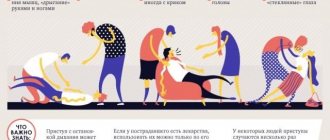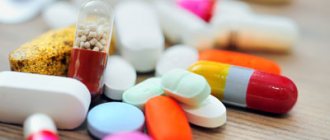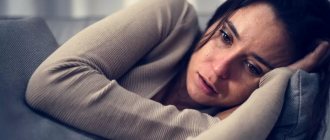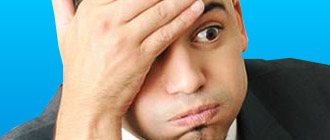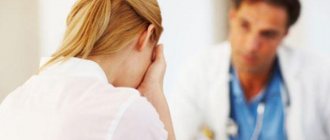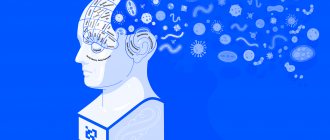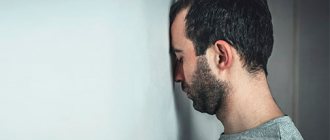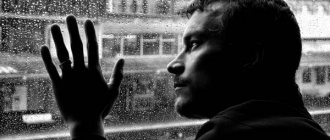Neuroleptics
When trying to classify antipsychotics, scientists primarily rely on their chemical structure:
- aliphatic phenothiazines - drugs whose antipsychotic activity is weakly expressed, they are aimed at sedation (calm down, help to sleep);
- butyrophenones (popular haloperidol) are powerful antipsychotics that have almost no sedative effect, they stop hallucinations and delusions;
- dibenzazepines have mild side effects, are better combined with other drugs, but have almost no sedative effect, and are aimed at relieving psychotic manifestations;
- Phenothiazine derivatives relieve pain and are prescribed for damaged blood vessels and thrombophilitis.
Neuroleptics or antipsychotics are atypical or typical, long-acting or non-long-acting. Typical antipsychotics are outdated drugs that do an excellent job of relieving psychotic symptoms, but have a high likelihood of side effects. Atypical is a modern version of antipsychotics that reduces the risk of side effects to a minimum. Long-acting antipsychotics have a long-lasting effect, their effect is noticeable for 20-30 days. They are not taken daily.
Neuroleptics eliminate severe fear, anxiety, agitation, and improve sleep. They are used for severe psychotic depression, the dosage is low. Neuroleptics are prescribed more often to patients with psychoses combined with psychomotor agitation. Less commonly used for apathy and lethargy.
Prescribing antipsychotics to children is a controversial issue in psychiatry. There is a lack of evidence-based medicine on this issue. Therefore, antipsychotics are prescribed to pediatric patients, but rarely, with caution and in small dosages.
ANTIDEPRESSANTS (Part 1)
Preferanskaya Nina Germanovna Associate Professor, Department of Pharmacology, Educational Department, Institute of Pharmacy and Translational Medicine, Multidisciplinary Center for Clinical and Medical Research, International School “Medicine of the Future”, First Moscow State Medical University. THEM. Sechenov (Sechenov University), Ph.D.
Depression (from the Latin depressio - depression, oppression) is a mental disorder characterized by a progressive “depressive triad”: depressed unreasonable mood (hypotymia - with a predominance of melancholy, anxiety, depression), combined with inhibition of intellectual thought processes (associative inhibition) and with a violation psychomotor, motor and speech activity. Additional symptoms indicating the presence of a depressive disorder are low self-esteem or a feeling of self-doubt, delusions of self-blame, suppression of desires, avoidance of contacts, isolation, sleep disorders, decreased appetite, etc.
Depression cannot go away on its own without treatment. Antidepressants, when used systematically, relieve pathological processes and reduce symptoms. In healthy people, they do not improve mood and do not affect mental activity.
“Endogenous depression” includes depression: senile (among people over 65 years old it occurs three times more often), post-traumatic, postpartum (10%), menopausal, etc. “Reactive” depression often occurs as a result of dramatic experiences, after severe stress, the loss of a loved one or other psychological trauma. According to WHO, depression is the leading cause of adolescent morbidity and disability. The overall prevalence of depression in adolescence is 15–40%.
Depression “iatrogenic” or “pharmacogenic” can develop as a result of an undesirable side effect when using drugs such as levodopa, glucocorticosteroids, benzodiazepine derivatives , as well as with the abuse of sedatives, hypnotics, psychostimulants, narcotic substances (opiates, cocaine) or alcohol.
Depression is an etiologically heterogeneous disorder and its development is associated with a deficiency of biogenic amines: serotonin, norepinephrine, dopamine. The main pronounced symptom is unmotivated depressing melancholy, which can be expressed in a wide range - from feelings of boredom and sadness to a dramatic feeling of hopelessness. Patients have thoughts about their own inferiority and worthlessness, and feelings of guilt towards relatives. With depression, self-esteem is reduced, and there is a loss of interest in life and usual activities. In some cases, a person suffering from it may begin to abuse alcohol, psychotropic substances, and become more prone to suicidal attempts (suicide).
Desynchronosis is of great importance in the pathogenesis of depression ; the content of biogenic amines, mainly serotonin and norepinephrine, decreases in the emotional centers of the limbic system and the hypothalamus. Antidepressants enhance synaptic neurotransmission, increase the amount of monoamines, disrupt the neuronal reuptake of monoamines at presynaptic terminals, and cause a decrease in the enzymatic inactivation of monoamines by monoamine oxidase (MAO).
Atypical antidepressants primarily act on receptors. By potentiating the effects of serotonin, norepinephrine, and dopamine, these drugs improve mood, reduce aggressiveness, make it easier to fall asleep, and change the sexual behavior of patients.
Medicines belonging to the “Antidepressants” group are prescribed as medications for depressive disorders. When these drugs are prescribed, only 60% of patients respond to initial therapy, 60% experience repeated relapses, and in 17% they continue throughout life.
According to the mechanism of action, the following groups of antidepressants are distinguished:
1. Neuronal monoamine reuptake inhibitors:
a) non-selective : Amitriptyline, Imipramine (Imizin, Melipramin), Clomipramine (Anafranil), Pipofezin (Azafen);
b) selective serotonin inhibitors : Paroxetine (Paxil), Fluoxetine (Prozac), Sertraline (Zoloft), Fluvoxamine (Fevarin), Citalopram (Cipramil), Escitalopram (Cipralex);
c) preferential norepinephrine inhibitors : Maprotiline (Ludiomil), Reboxitin (Edronax).
2. Melatonin receptor agonists : Agomelatine (Valdoxan).
3. Atypical antidepressants : Mirtazapine (Remeron), Tianeptine (Coaxil), Trazadone (Trittico), Mianserin (Lerivon), Vortioxetine (Brentellix).
4. Other antidepressants : Venlafaxine (Alventa), Duloxetine (Cymbalta), Milnacipran (Ixel).
5. Monoamine oxidase inhibitors (MAOIs):
a) non-selective, irreversible type: Nialamid (Nuredal);
b) selective MAO type A, reversible type of action : Moclobemide (Aurorix), Pirlindol (Pyrazidol).
tricyclic antidepressants - Amitriptyline, Imipramine, Clomipramine, Pipofezin, Tianeptine. Tricyclic antidepressants get their name due to the presence of three rings in the chemical structure. Drugs with a tetracyclic structure (heterocyclic) - Pirlindol, Maprotiline, Mianserin, Mirtazapine and antidepressants with a different structure - Moclobemide, Milnacipran, Venlafaxine, Fluoxetine, Fluvoxamine, Paroxetine, Trazadone, etc.
Depending on the chronological entry of drugs into the pharmaceutical market, antidepressants are conventionally divided into four generations. The first generation includes drugs that were discovered in the 50s. last century. Imipramine, marketed under the trade name Tofranil in 1957, was the first member of the class of tricyclic thymoleptics. Subsequently, based on the Tofranil formula, Amitriptyline, Clomipramine, and others were created. Drugs in this group have undesirable side effects and are toxic, and therefore they are not widely used at this time.
Second generation antidepressants , which appeared on the pharmaceutical market in the period 1980–1987, have selectivity of action, affecting the reverse neuronal uptake of serotonin. Most drugs are better tolerated by patients than first-generation drugs. However, the antidepressant effect is not sufficiently pronounced, and their clinical effectiveness does not exceed the former. This group includes Fluoxetine, Paroxetine and a huge number of generic equivalents. These drugs cause fewer side effects and are safe in overdose.
This group often includes Maprotiline and Pirlindol with a different mechanism of action.
The third generation also includes selective serotonin reuptake inhibitors with the trade names “Zoloft”, “Prozac”, “Cipramil”, etc., which were synthesized since 1990. They have a regulatory, corrective effect on the biochemical processes of the brain by changing the concentration of biogenic amine. However, course therapy with these drugs is very expensive and not every patient can afford it. No less important here is the question of “price - quality”.
The fourth generation includes modern drugs obtained from the beginning of the millennium to the present - they are classified into the group “Other antidepressants” (TN “Cymbalta”, “Ixel”, “Wellbutrin”, etc.). The drugs have powerful antidepressant activity with a “dual mechanism of action.” The clinical and therapeutic effect is observed by the end of the first week of treatment; the drugs are well tolerated and have minimal side effects.
Among antidepressants, there are drugs with a pronounced psychostimulant component ( timeretics ) - Imipramine, Fluoxetine, Moclobemide, Sertraline, Milnacipran and drugs with a sedative component ( thymoleptics ) - Amitriptyline, Pipofezin, Maprotiline, Mianserin, Mirtazapine, Trazadone.
- For depression, with a predominance of motor and mental retardation, without a pronounced feeling of melancholy, drugs with a stimulating effect are indicated - reversible MAO type A inhibitors , etc.
- For depression with a predominant feeling of melancholy, accompanied by unaccountable restlessness, anxiety and gloomy irritability - antidepressants with a sedative effect, non-selective neuronal uptake inhibitors .
- For the treatment of deep melancholy or apathetic depression, selective serotonin inhibitors , which have a beneficial effect on the anxiety component.
- For severe anxious depression with suicidal thoughts and intentions, tricyclic antidepressants .
- For poor tolerance and high blood pressure - Tianeptine .
- In cases of mild depression, herbal preparations of St. John's wort , which are related to biologically active additives (BAA) - St. John's wort herb extract, St. John's wort herb extract dry, TN "Negrustin", "Deprim Forte", "Gerbion Hypericum", etc.
√ When treated with antidepressants, the consumption of alcohol-containing drinks and ethanol is not allowed.
Antidepressants have found use in psychiatric practice, for the treatment of manic-depressive states, in the complex therapy of senile dementia (dementia) and the treatment of chronic alcoholism, etc.
Antidepressants are non-selective inhibitors of neuronal monoamine and are mainly tricyclic compounds in chemical structure. The mechanism of action is associated with inhibition of neuronal reuptake of neurotransmitters, as a result of which the concentration of norepinephrine and serotonin in the synapses of the central nervous system (CNS) increases and the sensitivity and reactivity of postsynaptic receptors to them changes. Amitriptyline and clomipramine are more potent in inhibiting serotonin than other tricyclic antidepressants. Imipramine inhibits both neurotransmitters equally. A pronounced antidepressant effect develops with continuous use of the drug for 2–4 weeks. Some drugs have an antidepressant effect combined with a sedative effect; it is most pronounced in Amitriptyline.
This group of drugs has a pronounced peripheral and central anticholinergic (M-anticholinergic) effect. Most often manifested in Amitriptyline and Clomipramine, to a lesser extent in Imipramine. This effect is often a side effect, manifested by visual disturbances (pain in the eyes, blurred vision), rapid irregular contractions of the heart, muscle tremors (hands, arms, head), spastic manifestations of the gastrointestinal tract, constipation, and urination problems. The central manifestation of this effect is associated with parkinsonian syndrome (difficulty speaking or swallowing, tardive dyskinesia, shuffling slow gait, patients have a mask-like face, etc.). Drugs with anticholinergic activity cannot be used for glaucoma, because they may increase intraocular pressure.
Amitriptyline (Amytriptiline)/Triptisol is available in the following forms: tablet, coated. vol., 0.01 g and 0.025 g; 1% solution for intramuscular administration, amp. 2 ml. The drug has an antidepressant, anxiolytic, sedative effect; exhibits an analgesic effect (of central origin), antiarrhythmic, eliminates bedwetting.
Important! During the treatment period, it is necessary to refrain from driving vehicles and activities that require increased concentration and speed of psychomotor reactions.
Imipramine /Imizin/Melipramine is the main representative of typical tricyclic antidepressants, with high antidepressant effectiveness, a pronounced psychostimulating effect, but less anticholinergic and sedative, more hypotensive. Available in the following forms: table. 0.025 g, 1.25% solution, amp. 2 ml.
The drug is used for depressive states of various etiologies, accompanied by motor and ideational retardation, for psychopathy and neuroses. When treating depression, it is recommended to take the drug in the first half of the day, before 15–16 hours, because there is a risk of possible insomnia.
Clomipramine /Anafranil is available in the following forms: table. and caps. 0.01 g, 0.025 g, 0.05 g; 1.25% solution, amp. 2 ml. The drug, unlike others, has an alpha-adrenergic blocking, H1-histamine blocking effect. The psychostimulating effect is less pronounced, the sedative effect is weak.
It is used for depressive states of various etiologies and with various symptoms.
Important! It must be remembered that sexual disorders, convulsions, nausea, and vomiting occur more often than with other tricyclic antidepressants. The drug should not be used by mothers during breastfeeding, because it passes into breast milk.
Pipofezine /Azafen (25 mg tablet) is the first original domestic antidepressant approved for medical use in 1970, which is similar in pharmacological properties to Imipramine. The antidepressant effect is combined with a sedative. When used, it is well tolerated, does not increase anxiety, fear, does not provoke sleep disturbances and does not cause delusions and hallucinations. Due to the lack of M-anticholinergic activity, the drug does not have a cardiotoxic effect and can be used for glaucoma.
It is used for asthenodepressive syndrome, anxiety-depressive conditions, alcoholic depression and depressive conditions in chronic somatic diseases.
Nootropics
Nootropics are drugs that have a positive effect on the functionality of the higher integrative parts of the brain. That is, they have a positive effect on mental abilities and increase the activity of cognitive functions. A person becomes more learnable, his memory processes and resistance to distress improve. There are several groups of nootropics:
- “true” nootropics, the action of which is concentrated on improving mnestic functions;
- group of neuroprotectors - the mnestic effect is secondary, the effect on the central nervous system is mixed (anticonvulsant, muscle relaxant, antihypoxic);
- primary action nootropics - directly affect nerve cells;
- secondary action - improve cerebral blood flow, microcirculation, have pronounced antiplatelet and antihypoxic effects;
- neurodynamic or neuroregulatory - primarily aimed at stimulating metabolic processes in nervous tissues, prescribed to patients with anoxia, ischemia, intoxication, and injury.
Nootropics affect the processes of metabolism and bioenergy metabolism in nervous tissue; they interact with the neurotransmitter sphere of the brain. Children are prescribed with caution, in small dosages.
Nootropics are not recommended for use during pregnancy and lactation, gastric ulcers, feverish conditions, problems with the liver and kidneys. Nootropics are not prescribed to patients with sensitivity to components or epilepsy. During use, it is recommended to undergo blood and urine tests in a timely manner to assess the results of the course of nootropics.
